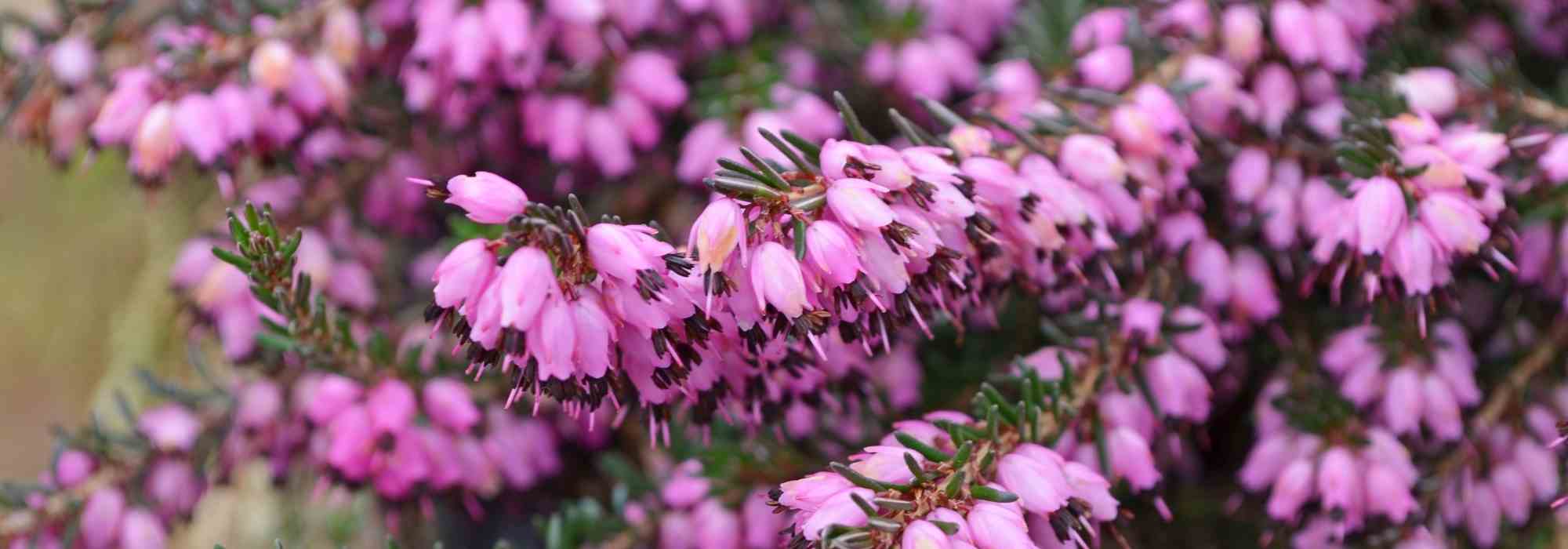
Pruning heather: when and how?
Our tips for successful pruning
Contents
Heathers heathers form small shrubs with a very low, spreading habit. Most commonly planted varieties (Erica carnea, Erica (x) darleyensis and Calluna vulgaris) usually reach 30 to 50 cm high at most and slowly form large flowering carpets or dense tufts in a wide range of colours. They are small evergreen shrubs perfect for edging, rockeries, banks or for planting heather beds. However, there are shrubby heathers, such as Erica canaliculata and Erica mediterranea, which can reach up to 1.5 m in height.
Some species flower in summer — summer heathers — others in winter — winter heathers. In either case, a heather needs to be pruned at the end of its flowering to maintain an attractive habit and remove dead wood. Simply adapt the correct pruning technique to the variety in order to carry it out at the right time.
Discover all our tips and explanations to get pruning right!
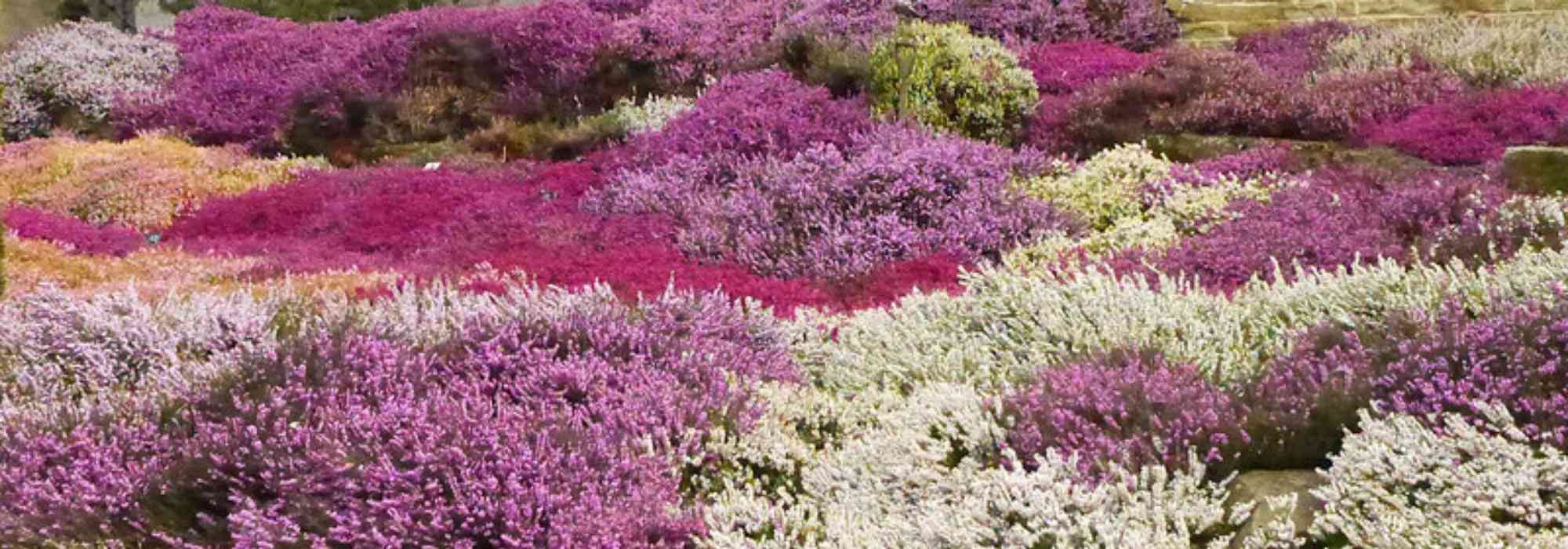
A heather garden requires careful pruning (Photo: L. Shepherd)
When to prune heather?
Heathers are pruned annually after flowering, in late winter, spring or autumn depending on variety. Prune immediately after flowering because new shoots emerge very quickly: if you prune them, you will deprive yourself of flowering. In any case, avoid pruning during periods of frost or extreme heat.
- Winter heathers (Erica carnea and Erica (x) darleyensis) flower in winter from October to May depending on climate despite the cold. Prune from late winter to mid-spring.
- Calluna vulgaris or summer heathers flower from August to October, so pruning should be carried out in autumn.
- Cut back old clumps of these non-shrubby heathers every 4 years to rejuvenate them.
Read also
Heathers: planting, pruning and careHow to prune heather?
Equipment: what to prepare?
-
A clean, well-sharpened and alcohol-disinfected pruning shear and shear to prevent transmission of diseases from one plant to another. These tools will allow you to prune plants with compact branches and encourage denser growth.
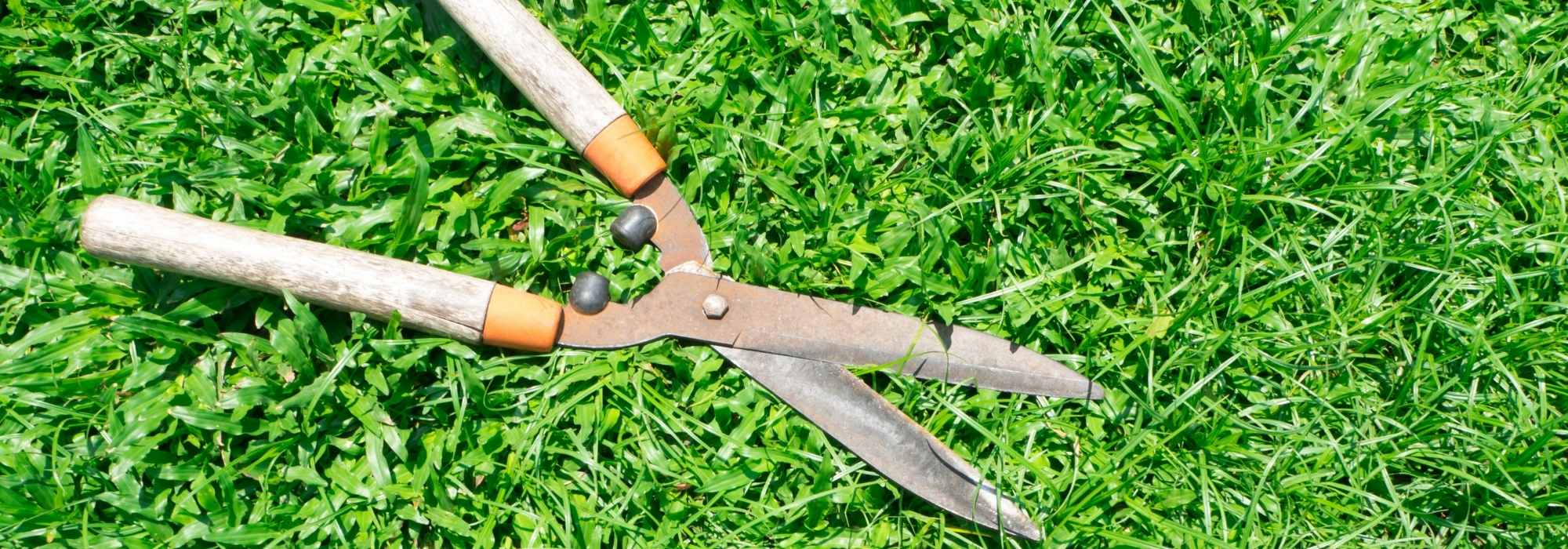
Why prune?
Pruning heather is straightforward! It’s simply about restoring a neat, rounded, compact shape and extending its lifespan by encouraging it to branch. The idea is to remove spent flowers, even out the shape of the clump and remove dead wood.
Maintenance pruning
It helps maintain a balanced, dense shape.
- Each year, once flowering has finished, shorten young shoots with a pruning shear. This light maintenance pruning is sufficient for young heathers.
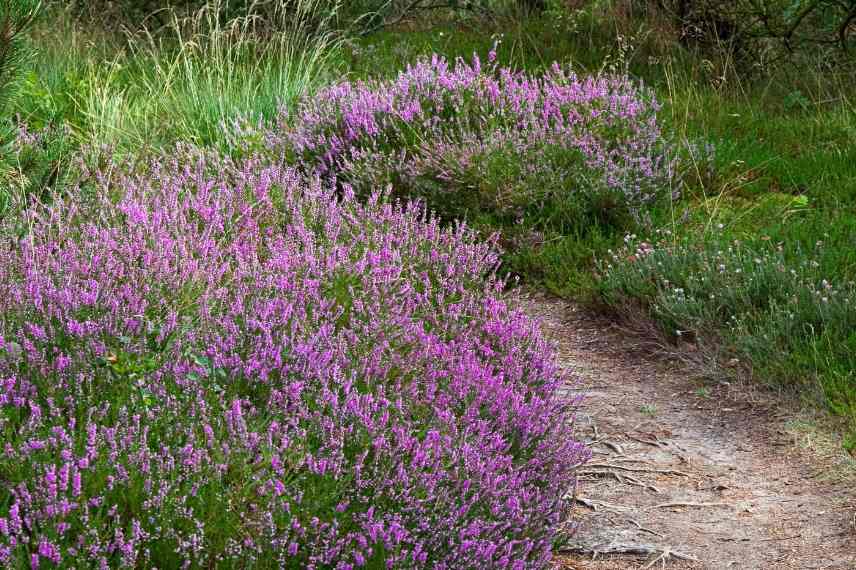
Rejuvenation pruning
It allows less floriferous, neglected or thinning adult plants to gain a new lease of life, regenerating them and restoring a full, dense foliage. However, if your heather is pruned every year, it should not need such severe pruning.
- With a shear, cut back all spent shoots by one third, to about 2–5 cm above last year’s shoot, never cutting below the last green leaves, so without touching old wood
- Remove all dead or damaged branches
- Fork over soil with well-rotted compost and water to ensure recovery
⇒ Note: Arborescent heathers such as Erica mediterranea only need a light pruning each year, as they cannot tolerate such drastic cutting back which would compromise subsequent flowering and weaken the plant.
Discover other Heathers
View all →Available in 0 sizes
Available in 0 sizes
Available in 0 sizes
Available in 1 sizes
Available in 3 sizes
Available in 2 sizes
Available in 2 sizes
Available in 3 sizes
Available in 1 sizes
Available in 3 sizes
Everything you need to know
Discover our plant profile: “Heathers: planting, pruning and maintaining”
- Subscribe!
- Contents
































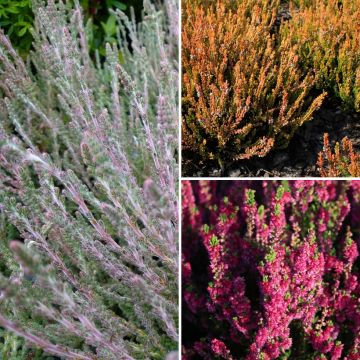
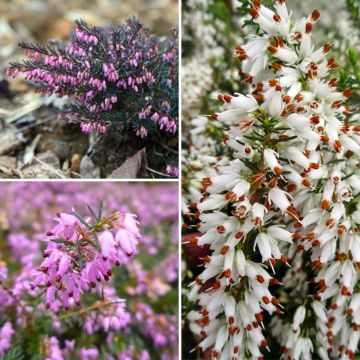
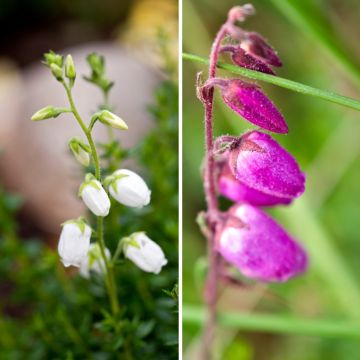
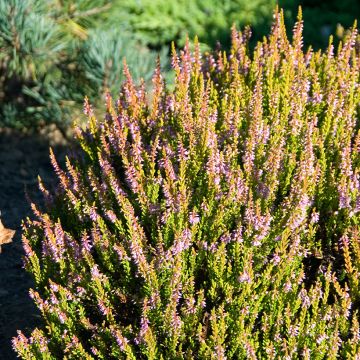
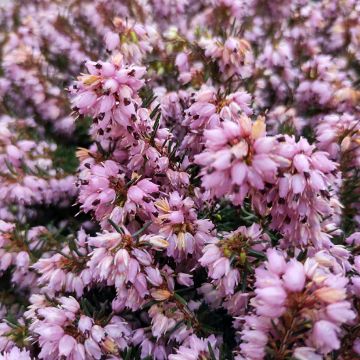
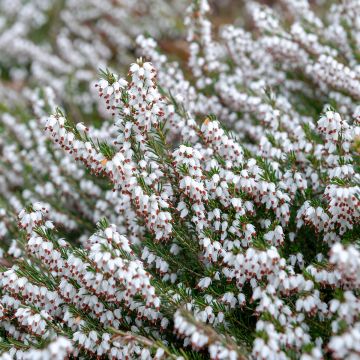
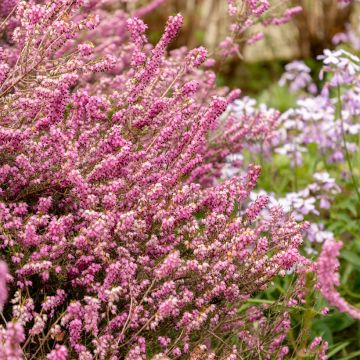
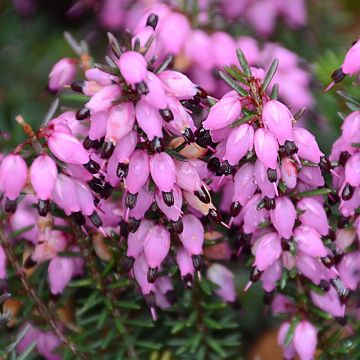
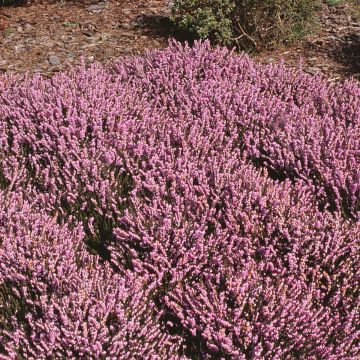
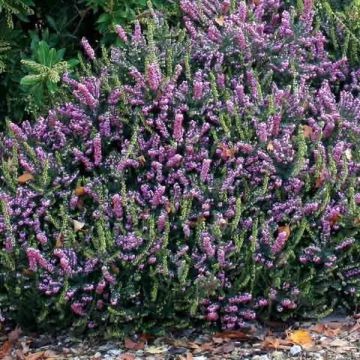
Comments